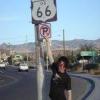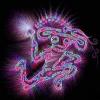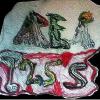To update my LLLT usage: I've compiled my data since September 2013 and found a large positive correlation with personal productivity. But since it's impossible to find anything in Lostfalco's thread, I've posted it as a separate thread: http://www.longecity...h-productivity/
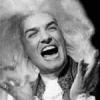
Lostfalco's Extensive Nootropic Experiments [Curated]
#2011
Posted 04 August 2014 - 03:21 AM
#2012
Posted 04 August 2014 - 09:08 PM
Has anyone tried MitoQ instead of ubiquinol/ubiquinone + pqq + shilajit combo and have something to report? Or, knows enough about the research to comment?
I've been using MitoQ in conjunction with LLLT. For the purpose of LLLT, I found it improved how I feel post treatment. No temporary brain fog, or loss of mojo.
Note: I've taken ubiquinol/ubiquinone, PQQ, shilajit in various combinations.
My current regime is 5 mins per spot every other day.
#2013
Posted 04 August 2014 - 09:29 PM
Anyone here try Idebenone, or have any opinion on it?
#2014
Posted 04 August 2014 - 09:44 PM
magta39 im trying it right now but too early to make an opinion
#2015
Posted 16 August 2014 - 02:54 AM
I started LLLT + PQQ + CoQ10(ubiquinol) about 3 weeks ago. Started with 20 seconds, currently using about 45-60 seconds per spot with the 48 LED unit everywhere except the back of the head. I'm not sure if I'm using too little or too much at the moment. I had good initial success but lately I'm not sure. My currently line of thinking is that I should be consuming something extra to get more energy to my brain.
LLLT every other night, PQQ and CoQ10 every morning. Started creatine and ALCAR a few days ago.
Also started unmodified potato starch about 10 days ago and it seems to unequivocally increase dreams... also sleep quality is good.
Is anyone using NAC with this? Is it best avoided just prior to lasering?
What can be added to make this better? Some form of sugar? MCT oil? Fish oil?
#2016
Posted 16 August 2014 - 03:18 AM
http://en.wikipedia....ological_tissue
"The absorption coefficient ( ) is defined as the probability of photon absorption in tissue per unit path length".
) is defined as the probability of photon absorption in tissue per unit path length".
Fun facts:
- 850 nm light travels about 100 times farther than visible light, in blood.
- 850 nm light is absorbed about 100 times more strongly than 500 nm light, in H2O.
Light propagation in biological tissue is affected by light scattering by particles.
The effective attenuation coefficient in biological tissue comes from a combination of absorption and scattering. "Attenuation of light in deep biological tissue depends on the effective attenuation coefficient ( ), ..."
), ..."
The effective attenuation coefficient in arteries, veins, and breast tissue is about 3/cm at 850 nm.
So I expect that the fraction of photons remaining after x centimeters is exp[-(3x/cm)], or 5% remaining after 1cm, 0.24% after 2cm, and 0.01% remaining after 3cm. Nonetheless, for 2cm, 0.24% of a 'huge number of photons' can still have a biochemical effect.
I have a PhD in physics but not ready to guarantee accuracy for that equation after just skimming the relevant parts of that wiki page... corrections welcome.
Edited by elitesagan, 16 August 2014 - 03:21 AM.
#2017
Posted 16 August 2014 - 09:56 AM
http://en.wikipedia....ological_tissue
"The absorption coefficient (
) is defined as the probability of photon absorption in tissue per unit path length".
Fun facts:
- 850 nm light travels about 100 times farther than visible light, in blood.
- 850 nm light is absorbed about 100 times more strongly than 500 nm light, in H2O.
Light propagation in biological tissue is affected by light scattering by particles.
The effective attenuation coefficient in biological tissue comes from a combination of absorption and scattering. "Attenuation of light in deep biological tissue depends on the effective attenuation coefficient (
), ..."
The effective attenuation coefficient in arteries, veins, and breast tissue is about 3/cm at 850 nm.
So I expect that the fraction of photons remaining after x centimeters is exp[-(3x/cm)], or 5% remaining after 1cm, 0.24% after 2cm, and 0.01% remaining after 3cm. Nonetheless, for 2cm, 0.24% of a 'huge number of photons' can still have a biochemical effect.
I have a PhD in physics but not ready to guarantee accuracy for that equation after just skimming the relevant parts of that wiki page... corrections welcome.
Some other dude has calculated a bit, you could check him out:
http://heelspurs.com/led.html#str
http://heelspurs.com/led.html#deep
His whole page on LLLT is awesome.
#2018
Posted 16 August 2014 - 07:10 PM
Thanks for the link Nattzor. He has the same equation and approx. the same coefficient.
I'm going to add D-Ribose next. It actually looks promising for this and in general. Anyone have luck with it?
#2019
Posted 17 August 2014 - 01:39 AM
LLLT can make me depressed @1min/spot if I use it more than 1 week EOD. I however deal with it.
What's worse, a very nasty side effect (at least for me), is that my verbal fluency takes a nosedive and it lasts several days after a procedure. As a result I feel a lot dumber as opposed to enhanced when I'm looking for a word for 30 seconds. And yes, I'm sure its LLLT and not something else.
Does anyone else have this?
Best,
Steve
#2020
Posted 17 August 2014 - 07:12 AM
I'm sure its LLLT and not something else.
Can you provide some background on why you are so sure about this? Have you seen any benefits from LLLT?
#2021
Posted 18 August 2014 - 05:43 PM
My experiences and research on LLLT
http://selfhacked.co...review-of-lllt/
Montana, some background would be nice about the depressive side effects.
#2022
Posted 19 August 2014 - 12:03 AM
Alright,
so after 5-7 sessions EOD at more than 1min/spot I feel extremely scatterbrained immediately after the session. The day after depression sets in. I feel hopeless and am horrified by people, zero enthusiasm. It's worth mentioning, that I suffer from an anxiety disorder and sides might be related. Also, I take zoloft @ 25mg/day, Modafinil and what not.
Can you provide some background on why you are so sure about this? Have you seen any benefits from LLLT?
Edited by montana2012, 19 August 2014 - 12:09 AM.
#2023
Posted 19 August 2014 - 12:26 AM
Montana, I know what you mean.
Initially, when I started with LLLT over a year ago, I responded positively right off the bat. That being said, I started with very low doses: 30 secs at 1-2 spots --> one week off --> 30 secs at 2-4 spots --> one week off, etc. and then I built up to just about 1:30 per spot (or less) across my entire brain. Had absolutely fantastic results that were greatly enhanced when I also took the TULIP stack. I stopped just to see what would happen and benefits lasted for over 6 weeks, though they gradually were declining with each individual week off.
I've been experimenting with LLLT again for the past month or so, and I seem to respond in a much different manner. Intranasal red light has caused me an increase in panic, fear, brain fog, etc. but I haven't been able to pinpoint if that was due to having a lot of aspirin in my system, which I have no proof of but thought may be a "photosensitizer" of sorts, especially if doing intranasal LLLT shortly after taking aspirin. Transcranial LLLT, as of late, has either produced mild benefits, done nothing, or produced a 1-1.5 day period of brain fog and disorientation.
Since you said yourself that smaller 'doses' of LLLT work better, I'd stick with that, and maybe even experiment with decreasing the frequency of LLLT sessions. Again, when I had fantastic results with LLLT, I did it 1-2x every 7-12 days. I think I'm going to experiment with that again and see how I respond, though truthfully, I'm a little more interested in making my own full spectrum red/infrared sauna.
#2024
Posted 20 August 2014 - 06:11 AM
Aspirin is known to increase photosensitivity: http://en.wikipedia....hotosensitivity
I expect intranasal will give a bigger dose than through-the-cranium, for the same amount of time, so that is also a factor.
Montana, I would also recommend decreasing to 30 seconds per spot at most every other day. In my limited experience I have neutral to negative effects at 1 min/spot and positive effects at 20-40 seconds per spot. D-ribose is also working well so far, I think lostfalco should add it to his standard recipe in his profile. But I think d-ribose will only help after a successful LLLT dose and with PQQ+CoQ10 that increases the number of mitochondria.
#2025
Posted 21 August 2014 - 12:33 AM
For your TULIP stack, can pqq be replaced by resveratrol?
#2026
Posted 21 August 2014 - 09:05 AM
Aspirin is known to increase photosensitivity: http://en.wikipedia....hotosensitivity
I expect intranasal will give a bigger dose than through-the-cranium, for the same amount of time, so that is also a factor.
Montana, I would also recommend decreasing to 30 seconds per spot at most every other day. In my limited experience I have neutral to negative effects at 1 min/spot and positive effects at 20-40 seconds per spot. D-ribose is also working well so far, I think lostfalco should add it to his standard recipe in his profile. But I think d-ribose will only help after a successful LLLT dose and with PQQ+CoQ10 that increases the number of mitochondria.
I started taking D-ribose 2 days ago. I'll give it 12-14 days before judging. Don't waste money on creatine, won't work.
Session duration is crucial.
Cool fact of the day: Mito is a former bacteria, that decided to sneak into the cell and settle in. It blew my mind when I read it.
Edited by montana2012, 21 August 2014 - 09:05 AM.
#2027
Posted 21 August 2014 - 10:31 AM
Anyone else tried intranasal light?
I really cant see a reason why we couldnt put a 1W IR diode or another red spectrum and target it directly & deeply into the nose using optics for a few bucks instead of paying $299 for some Qi-veil device using probably the same technology..
Edited by Psionic, 21 August 2014 - 10:33 AM.
#2028
Posted 21 August 2014 - 03:06 PM
Aspirin is known to increase photosensitivity: http://en.wikipedia....hotosensitivity
I expect intranasal will give a bigger dose than through-the-cranium, for the same amount of time, so that is also a factor.
Montana, I would also recommend decreasing to 30 seconds per spot at most every other day. In my limited experience I have neutral to negative effects at 1 min/spot and positive effects at 20-40 seconds per spot. D-ribose is also working well so far, I think lostfalco should add it to his standard recipe in his profile. But I think d-ribose will only help after a successful LLLT dose and with PQQ+CoQ10 that increases the number of mitochondria.
I started taking D-ribose 2 days ago. I'll give it 12-14 days before judging. Don't waste money on creatine, won't work.
Session duration is crucial.
Cool fact of the day: Mito is a former bacteria, that decided to sneak into the cell and settle in. It blew my mind when I read it.
Know any cheap source for d-ribose?
#2029
Posted 26 August 2014 - 04:25 PM
Know any cheap source for d-ribose?
If you're Europe-based then I think bulkpowders.co.uk are an excellent choice.
I've been using them to order D-Ribose for about 3 years now. Very good quality, and very well priced.
#2030
Posted 26 August 2014 - 07:51 PM
Know any cheap source for d-ribose?
If you're Europe-based then I think bulkpowders.co.uk are an excellent choice.
I've been using them to order D-Ribose for about 3 years now. Very good quality, and very well priced.
This is even cheaper:
http://www.myprotein...r/10529373.html
Orders over 100£ = free shipping outside the UK
Always check for voucher codes:
http://www.voucherco...myprotein.co.uk
Usually -15% vouchers codes available.
I tried 1kg of D-Ribose, but not sure it did anything to me. I used to suffer from fibromyalgia and it didn't help for that.
#2031
Posted 26 August 2014 - 09:12 PM
What about d-ribose and AGE formation? Why are you guys taking this again?
http://www.plosone.o...al.pone.0024623
#2032
Posted 27 August 2014 - 12:46 AM
Nice thread lostfalco, you seem to be a very intelligent fella. I like the concept of Trichostatin A.
Also might be worth looking into in regards to nootropics, serotonin manipulation - specifically pharmacological blockade of all serotonin receptors except 5-HT5A.
Edited by Area-1255, 27 August 2014 - 12:47 AM.
#2033
Posted 28 August 2014 - 01:10 AM
Could LLLT potentially remove lipofuscin from brain?
We know that centrophenoxine was debunked and doesn't work for lipofuscin removal.
Anyone?
#2034
Posted 06 September 2014 - 04:02 AM
I've had a nice boost in wakefulness and performance since changing from 100mg to 200mg ubiquinol in the last 6 days. Overall now taking:
LLLT every 2 to 3 days, 48 LED, 40 seconds per spot. Evening.
Ubiquinol 200mg morning
PQQ 20mg morning every other day
2g D-ribose + NAC
Curcumin+bioperine twice/day, but not within 2 hours of completing LLLT. I should probably wait even longer.
EPA+DHA
Today I increased to 300mb ubuiqionol and it was like modafinil without the anxiety. Lostfalco is taking 300mg.
I want to add uridine + choline later.
"...dRib-induced reactive oxygen species (ROS) were partially suppressed by gliclazide and completely inhibited by NAC. " - http://www.ncbi.nlm....pubmed/22315655
#2035
Posted 08 September 2014 - 10:04 AM
I've been using LLLT for almost two weeks now. I have been using the 48 led for 45 seconds per spot every other day.
I also take daily:
3000 IU Vitamin D3
2 x Magtech (Nat. Stacks)
2 x Creatine (Nat. Stacks)
On days when i use LLLT i also use:
500mg ALCAR
200mg ALA
500mg Artichoke extract
100mg Ubiquinol
10mg BioPQQ
100mg Shilajit
My experiences are actually quite profound. I didn't notice to much in the beginning and it took a while to notice the effects but they seem to build up gradually. I have noticed a different perception while communicating, more energy and improved speed of thinking.
My social skills are actually on an entire different level now as before. I am ahead in the conversation as well as analysing the person i'm talking to and even analysing myself while i'm in the conversation. Be it emotions, verbal fluency or actions, i'm picking up on everything.
The only possible "drawback" i've noticed is that i find it hard to understand the intensity of emotions. Seems like i now have to figure out what intensity is normal and what is elevated or less then normal. So while i notice every little emotion, i don't yet understand how to interpret them or if they might even be irrelevant. Anyone else noticed this?
This shouldn't be taken as advice. This is just information and my recent n=1 experiences which i am sharing without any intentions.
I apologize if i made any spelling mistakes but i am not a native speaker. ![]() So far my experience with LLLT has been great and i will continue doing it.
So far my experience with LLLT has been great and i will continue doing it.
#2036
Posted 08 September 2014 - 06:49 PM
Has anyone tried MitoQ instead of ubiquinol/ubiquinone + pqq + shilajit combo and have something to report? Or, knows enough about the research to comment?
I've been using MitoQ in conjunction with LLLT. For the purpose of LLLT, I found it improved how I feel post treatment. No temporary brain fog, or loss of mojo.
Note: I've taken ubiquinol/ubiquinone, PQQ, shilajit in various combinations.
My current regime is 5 mins per spot every other day.
Hi Razor, I cannot find exact information on Amazon about mitoQ, what is it?
#2037
Posted 08 September 2014 - 07:37 PM
Has anyone tried MitoQ instead of ubiquinol/ubiquinone + pqq + shilajit combo and have something to report? Or, knows enough about the research to comment?
I've been using MitoQ in conjunction with LLLT. For the purpose of LLLT, I found it improved how I feel post treatment. No temporary brain fog, or loss of mojo.
Note: I've taken ubiquinol/ubiquinone, PQQ, shilajit in various combinations.
My current regime is 5 mins per spot every other day.
Hi Razor, I cannot find exact information on Amazon about mitoQ, what is it?
There's quite a bit of info on Longecity about it. Their website is also useful: mitoq.com.
#2038
Posted 16 September 2014 - 12:45 AM
“Reports of my death have been greatly exaggerated.” -Misquotation of Mark Twain
What's up my friends? How's everybody been doing? Holy crap I have a lot of posts to reply to! ha
Well, let's see here. What have I been up to? I don't even know where to start so let me just say that I'm systematically going through every particle and attempting to optimize it. Sorry if this is a mess…but I’m still learning so please be nice if I say something completely idiotic (which is quite likely, ha). I'm just gonna go off the top of my head. Here goes.......
1. Photons: we've already talked about photons just a little bit on this thread. =) Still using same LLLT protocol.
http://www.ncbi.nlm....pubmed/25196192
2. Electrons: tDCS…not currently using but I'm a big fan.
3. Magnetism: not affordable yet (afaik) but very interesting.
4. Ultrasound: TUS…nothing new here, afaik.
5. Whole Body Vibration: interesting articles. Still using this daily.
http://www.ncbi.nlm....les/PMC3938804/
http://www.ncbi.nlm....pubmed/25031090
6. Molecular Hydrogen: ding, ding, ding...we have a winner! This stuff looks VERY interesting. I've been in touch with biochemist Tyler LeBaron http://www.molecular...ninstitute.com/ and he said that a new supplement should be coming out within the next month or so. I'll keep you guys updated.
Check out his site for a great summary of the literature on molecular hydrogen/hydrogen water. http://www.molecular...te.com/studies/
7. Lithium: check out Joe's excellent discussion.
http://selfhacked.co...its-of-lithium/
8. Boron: currently testing this out at low doses (I know we get quite a bit from food).
http://www.ncbi.nlm....pubmed/10050926
9. Oxygen: you guys know I love my concentrator. Excellent Nootropic.
10. Mitochondrial Biogenesis: PQQ, Epicatechin, Rice Bran Extract. I'm loving Cacao right now.
Rodent Study: http://www.ncbi.nlm....pubmed/25143004
Cells: http://www.ncbi.nlm....pubmed/25125472
11. HDAC inhibitor: Broccoli Sprouts…love them, but VERY expensive to actually reach study dosages.
http://www.ncbi.nlm....les/PMC2267876/
12. Gasotransmitters: NO, H2S, CO…still toying with various combos.
13. Microbiome: still taking potato starch and studying microbes that possibly produce PQQ. Here’s a recent message I sent to Jochen over at the Bulletproof forums.
Anyway, I noticed that two strains of bacteria in Prescript Assist also (possibly) produce PQQ. http://www.prescript-assist.com/products/
Acinetobacter calcoaceticus
http://www.ncbi.nlm....les/PMC2294125/
“Klebsiella pneumoniae needs six genes, seven genes are required in Methylobacterium extorquens (AM1) [16], whereas Acinetobacter calcoaceticus requires only four genes for PQQ synthesis.“
Pseudomonas fluorescens(?)
http://www.ncbi.nlm....pubmed/18055583
Not sure if this is the same type as in Prescript Assist. Pseudomonas fluorescens B16
“Genes involved in PQQ biosynthesis have been identified from various bacteria, including Acinetobacter calcoaceticus (Goosen et al., 1989), Methylobacterium extorquens AM1 (Toyama et al., 1997), Klebsiella pneumoniae (Meulenberg et al., 1992), Gluconobacter oxydans (Felder et al., 2000), and Pseudomonas fluorescens CHA0 (Schnider et al., 1991).”
Another really interesting strain is E. Coli Nissle 1917 which is in the extremely well tested probiotic Mutaflor. http://en.wikipedia.org/wiki/Mutaflor Unfortunately, it's not available in the U.S. anymore and I think they may have modified it for the study below.
http://www.ncbi.nlm....pubmed/24930470
Alcohol Clin Exp Res. 2014 Jul;38(7):2127-37. doi: 10.1111/acer.12456. Epub 2014 Jun 13.
Pyrroloquinoline quinone-secreting probiotic Escherichia coli Nissle 1917 ameliorates ethanol-induced oxidative damage and hyperlipidemia in rats.
Singh AK1, Pandey SK, Naresh Kumar G.
Abstract
BACKGROUND:
Chronic ethanol (EtOH) consumption is associated with oxidative tissue damage, decrease in antioxidant enzyme activities, and increase in hepatic and plasma lipids. This study investigates the effect of modified probiotic Escherichia coli Nissle 1917 (EcN) secreting pyrroloquinoline quinone (PQQ) against EtOH-induced metabolic disorder in rats.
METHODS:
Male Charles Foster rats were gavaged with EtOH (5 g/kg body weight [acute study] and 3 g/kg body weight per day for 10 weeks [chronic study]).
RESULTS:
Pretreatment of PQQ, vitamin C, and PQQ-secreting EcN prevented acute EtOH-induced oxidative damage in rats reflected by reduced lipid peroxidation in blood and liver and increased hepatic reduced glutathione. However, PQQ given externally was found to be most effective against acute EtOH toxicity. In the chronic study, rats treated with PQQ-secreting EcN showed remarkable reduction in oxidative tissue damage (liver, colon, blood, and kidney) with significant increase in antioxidant enzyme activities as compared to only EtOH-treated rats. Additionally, these rats had significantly lowered hepatic and plasma lipid levels with concomitant reduction in mRNA expression of fatty acid synthase (0.5-fold) and increase in mRNA expression of acyl coenzyme A oxidase (2.4-fold) in hepatic tissue. Antioxidant and hyperlipidemic effects of PQQ-secreting EcN are correlated with increased colonic short chain fatty acids (SCFAs; i.e., acetate, propionate, and butyrate) levels, and PQQ concentration in fecal samples (2-fold) and liver (4-fold). Extracted PQQ and vitamin C were given once a week, but they did not exhibit any ameliorative effect against chronic EtOH toxicity.
CONCLUSIONS:
Accumulated PQQ in tissues prevents hepatic and systemic oxidative damage. PQQ along with SCFAs reduced hyperlipidemia, which can be correlated with changes in mRNA expression of hepatic lipid metabolizing genes. Our study suggests that endogenous generation ofPQQ by EcN could be an effective strategy in preventing alcoholic liver disease.
This last one looks interesting as well.
http://www.ncbi.nlm....pubmed/24718737
Appl Biochem Biotechnol. 2014 Jun;173(3):775-86. doi: 10.1007/s12010-014-0897-z. Epub 2014 Apr 10.
Probiotic Escherichia coli CFR 16 producing pyrroloquinoline quinone (PQQ) ameliorates 1,2-dimethylhydrazine-induced oxidative damage in colon and liver of rats.
Pandey S1, Singh A, Kumar P, Chaudhari A, Nareshkumar G.
Abstract
Inflammation of the gastrointestinal tract is associated with reactive oxygen species (ROS) genesis. Alleviation of oxidative stress is achieved by using antioxidants and probiotics. Present study investigates a synergistic effect of the probiotic Escherichia coli CFR 16 containing Vitreoscilla haemoglobin gene (vgb), green fluorescent protein (gfp) gene and pyrroloquinoline quinone (pqq) gene cluster on oxidative stress induced by 1,2-dimethylhydrazine (DMH). Adult virgin Charles foster male rats (3-4 months) weighing 200-250 g were administered with DMH (25 mg/kg body weight, s.c.) twice a week for eight consecutive weeks. Rats receiving only DMH dose showed increased lipid peroxidation in liver and intestinal tissues with reduced activity of antioxidant enzymes, i.e. superoxide dismutase (SOD), catalase (CAT) and glutathione peroxidase (GPx). Oral dose of E. coli CFR 16::vgb-gfp harbouring pqq gene cluster increased rat faecal PQQ concentration by twofold, reduced lipid peroxidation and retained SOD, CAT and GPx activities close to normal levels in liver and colonic tissues following DMH treatment. In addition, significant protection was found in colonic histological sections of these rat groups. This study demonstrates a protective efficacy in the following order: E. coli CFR 16 < E. coli CFR 16::vgb-gfp < vitamin C = PQQ < E. coli CFR 16::vgb-gfp (pqq).
Whew! Alright, that’s enough for now. Just a few things that I’m looking into at the moment. Please feel free to share any insights that you guys have!
Edited by lostfalco, 16 September 2014 - 01:20 AM.
#2039
Posted 16 September 2014 - 08:02 AM
@_@'
He's back...
#2040
Posted 16 September 2014 - 07:11 PM
I'm now three weeks into the first treatment block of a quantified, non-blinded ABAB experiment with LLLT. So far the data looks like its trenting towards a pretty decent boost of reaction time, and perhaps smaller increases in other scores that may not be significant. I'd consider it a big succes thus far, but I've also developped a persistent late insomnia over the same time period, and I've ruled out every pther possible cause I have data on except stress over the start of the new school year... has anybody had insomnia from TULIP?
Googling LLLT and insomnia turns up chinese studies aiming (infra)red lasers at the hypothalamus through the nostrils for treating insomnia, which is a pretty interesting idea. That thing regulates homeostasis for everything, including sleep management, as well as your entire endocrine system - I'd venture to say that tiny little knob of neurons is about as important to your wellbeing as your entire cortex, and it should be very hittable through the nose. I'm thinking of buying a laser and trying it, but I'm not sure what the dose should be with the increased distance but decreased bone mass inbetween. The chinese devices use a very low power device that takes 60 minutes to complete a treatment, and I don't think I'm up for waiting that long.
ETA: Glad to see lostfalco is alive and well.
Edited by Raza, 16 September 2014 - 07:27 PM.
Also tagged with one or more of these keywords: nootropic
Science & Health →
Brain Health →
Nootropic Stacks →
how would you describe Cerebrolysin to a person unfamiliar to nootropics?Started by davidwood557 , 01 Oct 2024 |
|

|
||
Round Table Discussion →
Business →
Retailer/Product Discussion →
J 147 Powder to Treat Alzheimer’s DiseaseStarted by Peptide.ltd , 18 Apr 2024 |
|
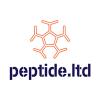
|
||
Science & Health →
Brain Health →
Montelukast?Started by mp_double , 25 Jan 2024 |
|

|
||
Science & Health →
Brain Health →
Nootropic Stacks →
What are the most effective NOOTROPICS based on science?Started by Forever21 , 30 Oct 2021 |
|

|
||
Science & Health →
Brain Health →
Dihexa?Started by brendan1 , 05 Sep 2021 |
|

|
161 user(s) are reading this topic
0 members, 161 guests, 0 anonymous users






































